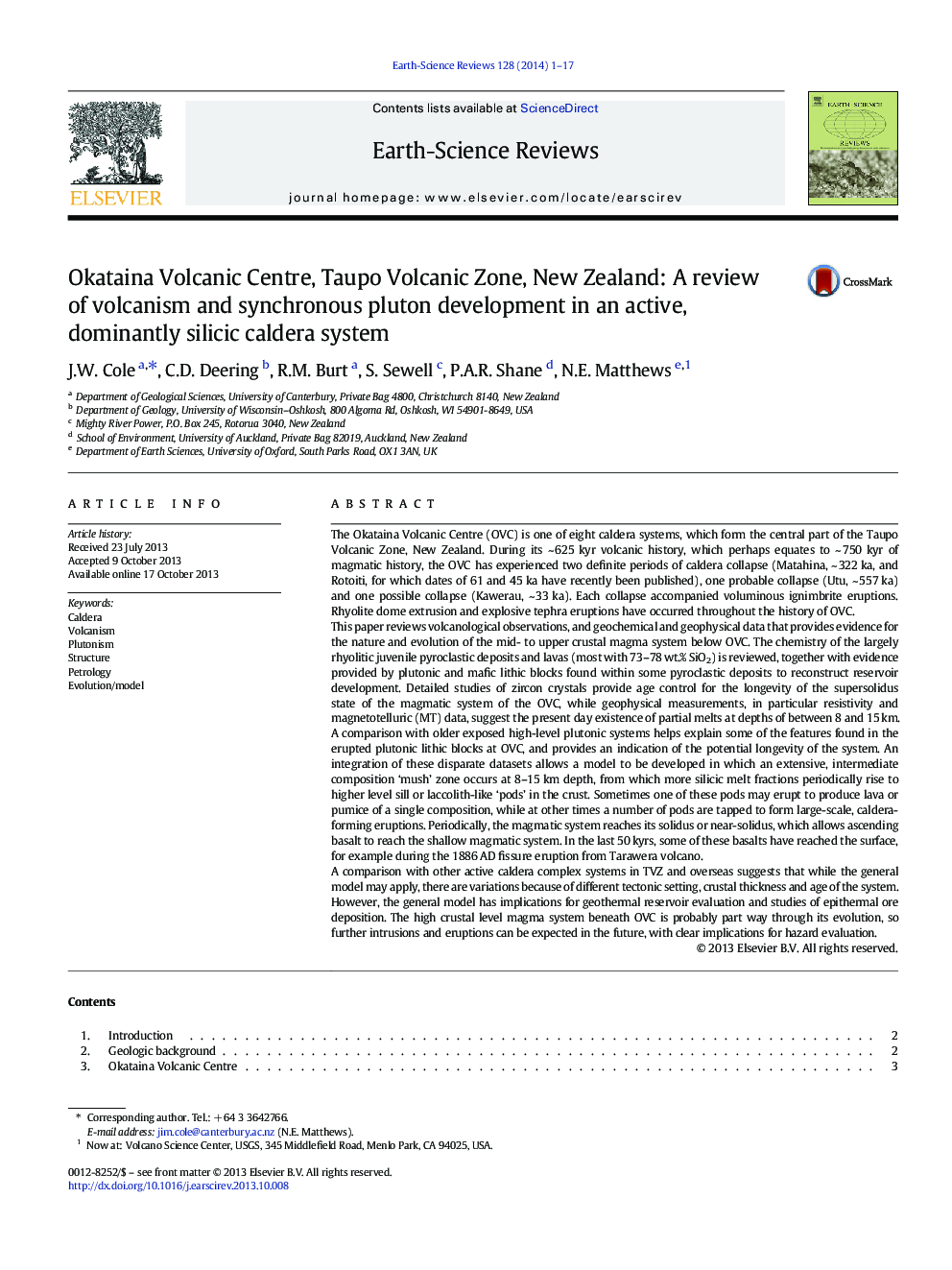| کد مقاله | کد نشریه | سال انتشار | مقاله انگلیسی | نسخه تمام متن |
|---|---|---|---|---|
| 4725795 | 1639974 | 2014 | 17 صفحه PDF | دانلود رایگان |
The Okataina Volcanic Centre (OVC) is one of eight caldera systems, which form the central part of the Taupo Volcanic Zone, New Zealand. During its ~ 625 kyr volcanic history, which perhaps equates to ~ 750 kyr of magmatic history, the OVC has experienced two definite periods of caldera collapse (Matahina, ~ 322 ka, and Rotoiti, for which dates of 61 and 45 ka have recently been published), one probable collapse (Utu, ~ 557 ka) and one possible collapse (Kawerau, ~ 33 ka). Each collapse accompanied voluminous ignimbrite eruptions. Rhyolite dome extrusion and explosive tephra eruptions have occurred throughout the history of OVC.This paper reviews volcanological observations, and geochemical and geophysical data that provides evidence for the nature and evolution of the mid- to upper crustal magma system below OVC. The chemistry of the largely rhyolitic juvenile pyroclastic deposits and lavas (most with 73–78 wt.% SiO2) is reviewed, together with evidence provided by plutonic and mafic lithic blocks found within some pyroclastic deposits to reconstruct reservoir development. Detailed studies of zircon crystals provide age control for the longevity of the supersolidus state of the magmatic system of the OVC, while geophysical measurements, in particular resistivity and magnetotelluric (MT) data, suggest the present day existence of partial melts at depths of between 8 and 15 km.A comparison with older exposed high-level plutonic systems helps explain some of the features found in the erupted plutonic lithic blocks at OVC, and provides an indication of the potential longevity of the system. An integration of these disparate datasets allows a model to be developed in which an extensive, intermediate composition ‘mush’ zone occurs at 8–15 km depth, from which more silicic melt fractions periodically rise to higher level sill or laccolith-like ‘pods’ in the crust. Sometimes one of these pods may erupt to produce lava or pumice of a single composition, while at other times a number of pods are tapped to form large-scale, caldera-forming eruptions. Periodically, the magmatic system reaches its solidus or near-solidus, which allows ascending basalt to reach the shallow magmatic system. In the last 50 kyrs, some of these basalts have reached the surface, for example during the 1886 AD fissure eruption from Tarawera volcano.A comparison with other active caldera complex systems in TVZ and overseas suggests that while the general model may apply, there are variations because of different tectonic setting, crustal thickness and age of the system. However, the general model has implications for geothermal reservoir evaluation and studies of epithermal ore deposition. The high crustal level magma system beneath OVC is probably part way through its evolution, so further intrusions and eruptions can be expected in the future, with clear implications for hazard evaluation.
Journal: Earth-Science Reviews - Volume 128, January 2014, Pages 1–17
